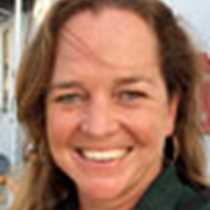Isabela & Fernandina Islands - Valentine’s Day in the Galápagos Islands
What better way for us Galápagos naturalists to spend this Valentine’s Day than in our very favourite part of the archipelago: the westernmost islands of Isabela and Fernandina; surrounded by our “Islander family” and a great group of fellow travellers!
The western realm of the Galápagos is special for two main reasons – we are surrounded here by the very young, volcanically active islands located right on top of the hotspot and everywhere displaying the fiery origins of the island group. These islands are also bathed by the upwellings of the cold Cromwell counter-current that brings abundant nutrients to the area, thus supporting incredibly rich marine ecosystems.Early morning cetacean watches allowed us to catch a glimpse of a large, solitary sperm whale before it dove back down into the depths; and large Mobul rays were leaping into the air all around us!
On dropping anchor we lowered our fleet of Zodiacs to explore the indented, rocky coastlines of the area. An unusual assortment of unique life forms live harmoniously together against the impressively steep outer walls of an Ecuador volcano, lined with vertical and horizontal lava intrusions.
After the Zodiac cruises under a hot tropical sun, we were looking forward to donning snorkeling gear and returning to actually join the dozens of green Pacific sea turtles we had just seen while cruising against the layered backdrop of sand-coloured tuff stone.
One of the most curious sights of our morning snorkel session, however, were the powerful legs and feet and the snake-like neck of one of the oddest of Galápagos denizens: the one and only flightless cormorant – definitely a one of the kind, never again to be repeated, true Galápagos experience!
What better way for us Galápagos naturalists to spend this Valentine’s Day than in our very favourite part of the archipelago: the westernmost islands of Isabela and Fernandina; surrounded by our “Islander family” and a great group of fellow travellers!
The western realm of the Galápagos is special for two main reasons – we are surrounded here by the very young, volcanically active islands located right on top of the hotspot and everywhere displaying the fiery origins of the island group. These islands are also bathed by the upwellings of the cold Cromwell counter-current that brings abundant nutrients to the area, thus supporting incredibly rich marine ecosystems.Early morning cetacean watches allowed us to catch a glimpse of a large, solitary sperm whale before it dove back down into the depths; and large Mobul rays were leaping into the air all around us!
On dropping anchor we lowered our fleet of Zodiacs to explore the indented, rocky coastlines of the area. An unusual assortment of unique life forms live harmoniously together against the impressively steep outer walls of an Ecuador volcano, lined with vertical and horizontal lava intrusions.
After the Zodiac cruises under a hot tropical sun, we were looking forward to donning snorkeling gear and returning to actually join the dozens of green Pacific sea turtles we had just seen while cruising against the layered backdrop of sand-coloured tuff stone.
One of the most curious sights of our morning snorkel session, however, were the powerful legs and feet and the snake-like neck of one of the oddest of Galápagos denizens: the one and only flightless cormorant – definitely a one of the kind, never again to be repeated, true Galápagos experience!



